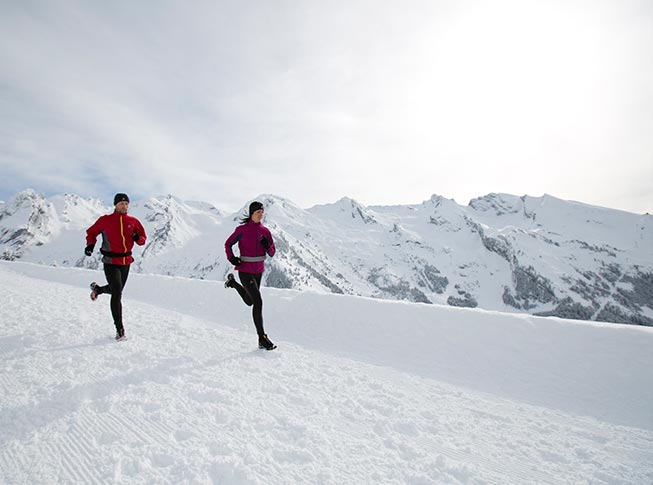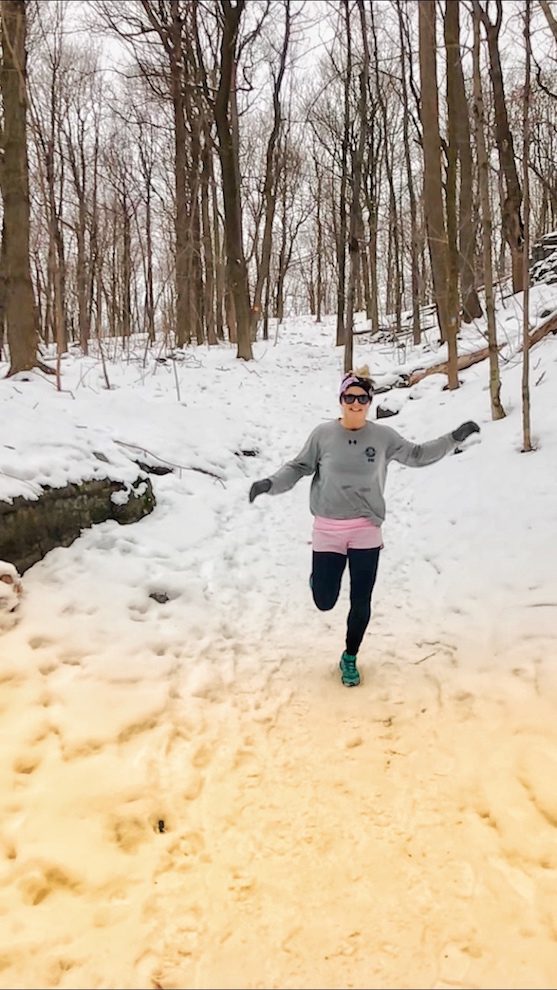6 steps for running in snow
When the trails are covered in white stuff, follow these steps to get the most out of your run

As trail runners, our first love is dirt. We can talk about it endlessly and run on it forever. However, trail running on dirt in Canada isn’t always available. Since Canadian weather can be unpredictable, trail runners need to know how to prepare for the white stuff. When snow hits the trails, we can look like an awkward and confused deer at its first high school dance. So when trail conditions call for snow, follow these not-so slippery steps to make the most of your run.
RELATED: Weekend weather: trails across Canada

Photo: Instagram
1. Assess the snow
There’s a reason there are 50 words for snow in the Inuit culture. It’s complicated. Skiers know a lot about snow. Like trail running, snow has its own dictionary. Snow can be fresh, packed, icy, a dusting, slushy, or dry. On the west coast, it’s snow-crete, and in the rockies it’s champagne powder. Embrace the skier mentality, and know the snow.
2. Choose your footwear
Your footwear depends on the snow conditions. If the snow is fresh and somewhat soft, a regular road or trail shoe will suffice. Fresh snow provides better traction. If the snow is icy, slushy, or slick, YakTrax or Kahtoola spikes over any kind of running shoe will serve you best.

3. Forget about pace
Running in snow can feel more challenging. It usually requires greater effort than running on either roads or trails. Trail runners are more likely to run by effort rather than pace anyway. Snow running is another opportunity to forget about pace, as the roads and trails look different. Enjoy the new terrain and leave your watch at home. Pro tip: sing Eminem to yourself as a metronome instead of using your watch for pace.
RELATED: 10 secrets of winter trail running
4. Alter your gait
In snow conditions that you aren’t familiar with, your running gait will inevitably change. This is not the time to show off your technical trail running skills. Picking up your feet as usual leaves more room for error (falling). Instead, keep feet low to the ground. This helps prevent slipping, spinning, straining a muscle, or doing the splits. It doesn’t feel as exciting as prancing around on technical single track, but it’s better than bailing.

5. Remember your cadence
A faster cadence may not only help reduce the risk of injury, it may keep you upright when running in snow. With your feet staying lower to the ground, shorten your stride and quicken your cadence.
6. Know the trail
This is excellent advice regardless of running on snow or dirt. Just like planning a trail adventure, know the conditions. When snow covers our favourite single track, it looks like a majestic white blanket. Don’t let nature’s beauty fool you. Even if you have run a route hundreds of times, the snow and its varying conditions will require extra caution. That part of the trail you could bomb the downhill? When it’s covered in snow, that route is now a brand new trail.


